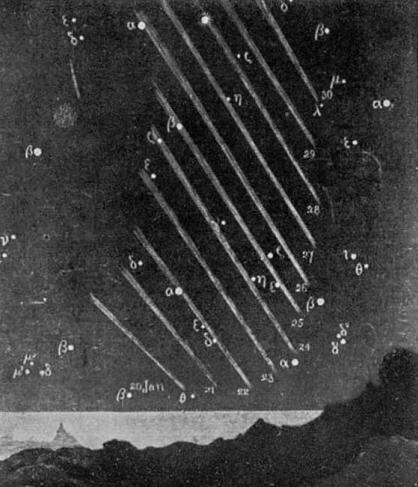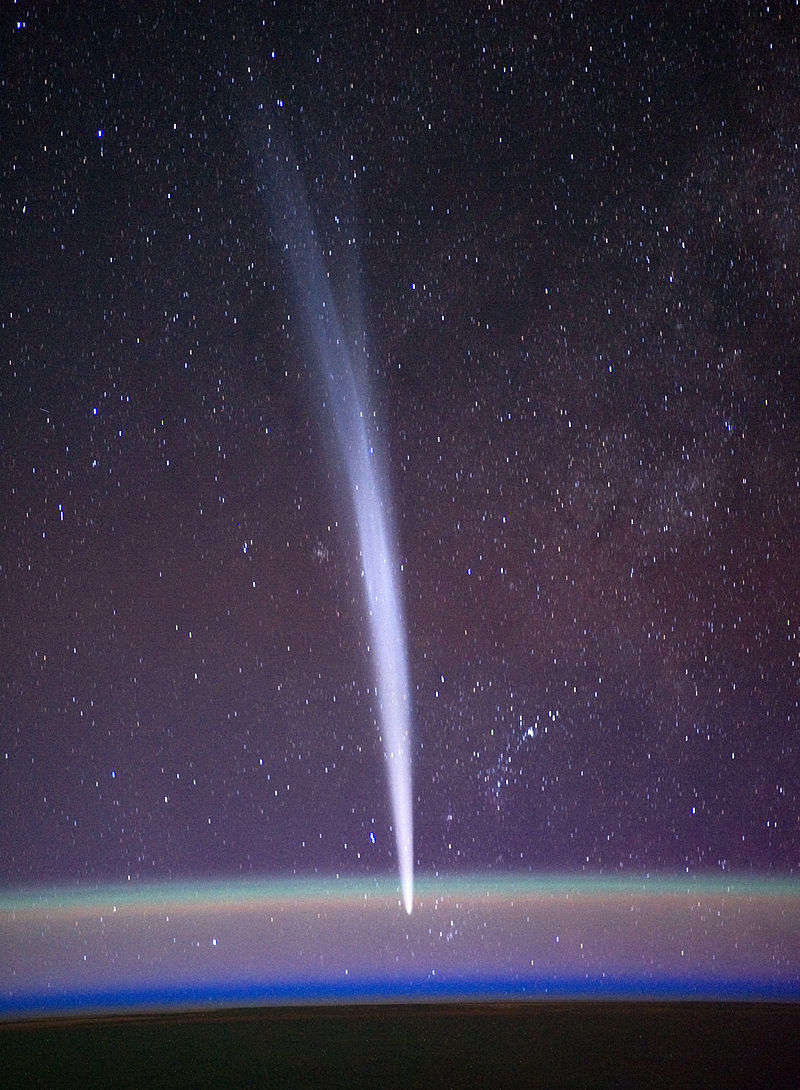The newest replace regarding “the opposite comet” of October 2024 — Comet C/2024 S1 (ATLAS) — is that it continues on track to fully disintegrate earlier than it sweeps across the solar early subsequent Monday.
Again on Oct. 10, House.com revealed an article indicating that this comet — which belongs to the Kreutz household of sungrazing comets — was within the technique of disintegration and would possible not turn into an attention grabbing object like its early October predecessor, Comet Tsuchinshan-ATLAS.
Nonetheless, an on-line story revealed this previous Monday night (Oct. 21) in a New York Metropolis tabloid, apparently ignited a renewed surge of pleasure by indicating that Comet ATLAS would evolve right into a “Halloween deal with” which, in response to a NASA official who was quoted within the article, “might turn out to be vibrant sufficient to see throughout the daytime.” Sadly, that is all a fallacy.
TOP TELESCOPE PICK:
Need to see comets within the evening sky up shut? The Celestron NexStar 4SE is right for freshmen and supplies glorious views of a variety of objects. For a extra in-depth have a look at our Celestron NexStar 4SE evaluation.
Comet ATLAS is extra more likely to merely disappear into the photo voltaic glare within the upcoming days. It has already proven indications that it’s step by step breaking up, which may very well be the principle motive why it’s brightening so very slowly because it races inward towards the solar.
Usually, a doubtlessly vibrant comet would are likely to quickly ramp-up in brightness because it will get progressively nearer to the solar, however with lower than per week to go earlier than Comet ATLAS involves inside actually a hairbreadth of the solar’s floor (referred to as the photosphere), it has not brightened a lot in any respect. Most observers have positioned it at round magnitude +10, which remains to be about 40 occasions dimmer than the faintest star that may be perceived with the naked-eye with none optical help, and a few have indicated that it has even light in current days.
Need to be sure to see the subsequent comet? Check out our guides on our finest telescopes for freshmen or the finest binoculars to search out the optics it is advisable see the subsequent icy customer to hurry previous the interior photo voltaic system.
Associated: Comet Tsuchinshan-ATLAS is a Halloween customer from the spooky Oort Cloud − the invisible bubble that is residence to numerous area objects
Right here we go!Comet ATLAS (C/2024 S1) may turn out to be a -6.7 magazine daytime object on the twenty eighth, albeit, it will likely be very near the solar on the time, and all warning have to be taken. Picture taken on the twentieth. Courtesy Gerald Rhemann. pic.twitter.com/qJETKOMV9LOctober 21, 2024
A part of a giant breakup a millennia or so in the past
Apparently, within the distant previous — maybe almost a thousand years in the past — a single large comet fragmented into numerous numbers of items of various sizes. And it is fairly possible that these fragments have themselves damaged up repeatedly as they’ve orbited the solar, leading to intervals starting from about 500 to 800 years.
Every of those items apparently swings extraordinarily near the solar, coming to inside lower than 1,000,000 miles of its floor. Comet ATLAS is considered one of these fragments. Orbital calculations confirmed that it was destined to certainly “graze” the solar’s floor subsequent Monday, Oct. 28, coming to inside a scant 341,000 miles (548,800 km).
Right here we go!Comet ATLAS (C/2024 S1) may turn out to be a -6.7 magazine daytime object on the twenty eighth, albeit, it will likely be very near the solar on the time, and all warning have to be taken. Picture taken on the twentieth. Courtesy Gerald Rhemann. pic.twitter.com/qJETKOMV9LOctober 21, 2024
Will it survive an in depth brush with the solar?
At that extraordinarily shut distance, the comet will probably be immersed deep throughout the solar’s outer environment or corona, and will probably be subjected to temperatures of at the least a million levels F. (555,537 levels C), in addition to endure large gravitational forces which may fully tear it aside. With a purpose to survive, Comet ATLAS will whiz across the solar alongside a hairpin-curved formed orbit at a pace of over 1,000,000 miles (1.6 million km) per hour. However by that time, the harm might have already got been achieved and nothing might stay on the comet’s return to deep area.
These of us right here on Earth would possibly be capable to observe the comet — whether it is nonetheless intact — because it passes closest to the solar early on Monday, Oct. 28, utilizing real-time imagery from the LASCO C3 coronagraph on the Photo voltaic and Heliospheric Observatory (SOHO), which displays the solar 24/7. Comet ATLAS will seem to go very shut above the solar round 8 a.m. EDT on Oct. 28. Observers had been in a position to observe Comet Tsuchinshan-ATLAS on this method earlier this month.
Initially hoped for a vibrant present
Comet ATLAS was found on Sept. 27 in Hawaii by the Asteroid Terrestrial-impact Final Alert System (ATLAS) mission, the article was initially cataloged as “A11bP7I.” However shortly thereafter, sufficient observations got here in to substantiate that it was certainly a comet and never an asteroid. When orbital calculations indicated that it belonged to the Kreutz household of sungrazing comets, a surge of pleasure adopted, as a result of some Kreutz comets have advanced into among the brightest on report.
As well as, the Nice Comets of 1680, 1811, 1843 and 1965 had gloriously vibrant tails stretching for a lot of tens of thousands and thousands of miles. Initially, it was hoped that Comet ATLAS would evolve into this kind of comet, however we now know that’s possible not going to occur.
A headless comet?
However, there would possibly nonetheless be one thing to see early on Halloween morning or throughout the opening days of November. It brings to thoughts a spooky Halloween story: The Headless Horseman. It’s a recurrent story involving a legendary determine whose origins might be traced again to Europe; historically depicting a rider on horseback who’s lacking his head.
Because it seems, in response to astronomer Qicheng Zhang of Arizona’s Lowell Observatory, Comet ATLAS “… has virtually definitely disintegrated,” including, “There’s in all probability not a lot left of its major core.” That having been stated, it now appears possible that even below the very best of circumstances, this newcomer — after coming inside a minim of the solar on Monday — can solely hope to current itself as a short-lived disembodied tail after it intently sweeps across the solar — if any kind of remnant is left in any respect. A headless comet just isn’t distinctive. In January 1887, The Nice Southern Comet of 1887 appeared and was seemingly all tail and no head.

Consequently, some older astronomical texts discuss with it because the “Headless Marvel”.
Then, in December 2011, Comet Lovejoy, one other Kreutz sungrazing comet, disintegrated simply earlier than Christmas, leaving in its wake a vibrant tail that was seen each from the bottom in addition to the Worldwide House Station.

When and the place to look
So, if you wish to attempt to see a headless comet for your self, then beginning on Halloween morning, about an hour earlier than dawn, and for about week thereafter, look towards the east-southeast horizon and see should you can catch an appendage that in essence ought to resemble a faintly glowing airplane contrail stretching upward and tilted towards the suitable. Scanning the horizon with binoculars will definitely assist.
Bear in mind, nevertheless, that odds are that the comet might have been fully consumed by its interplay with the solar and consequently, you won’t see something in any respect.
So, the ballyhooed “Halloween Deal with” would possibly, ultimately, change into a disappointing trick!
Joe Rao serves as an teacher and visitor lecturer at New York’s Hayden Planetarium. He writes about astronomy for Pure Historical past journal, the Farmers’ Almanac and different publications.





